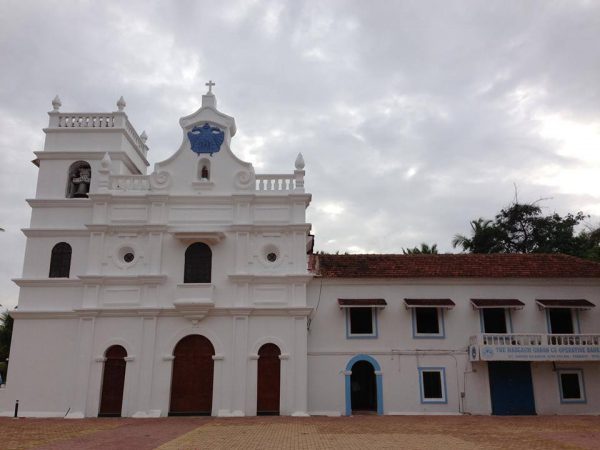For such a tiny state on India’s west coast, Goa has had an extremely illustrious history. There is so much talk and information on the Portuguese influences in Goa that it’s easy to forget that Goa was also ruled by other ancient Indian kingdoms in the past. There were the Bhojas, Mauryas, Chalukyas, Rashtrakutas, Shilaharas, Kadambas, Yadavas, Bahamanis, the Vijayanagara and Adilshahi dynasties. All of these came before the Portuguese invaded and colonized Goa, changing its history and culture forever. When the Kadamba dynasty conquered the state, it became known as the beginning of the Golden Age of Goa. They ruled Goa for over 300 years, between the 10th and 14th centuries, until they were driven out.
The ancient capitals and kingdom of the Kadamba dynasty
The Kadamba dynasty first ruled from the ancient town of Chandrapur. Today, this is the famous village of Chandor in South Goa. Later on, the kingdom’s capital was shifted to Gopakapattana, modern-day Goa-Velha.
The Kadambas took over the territories conquered by the Silharas in the 10th century and did not relinquish them until the 14th century. This vast kingdom of the Kadamba dynasty encompassed the villages of Pilar, Goa-Velha, Agassaim, Santan, Batim, Gauxi, Curca, and Gavallimolla (the Kadamba plateau). The Kadambas called it Govapuri or Gopakapattana which became the capital of the kingdom. Historians have given various reasons for the shifting of the capital from Chandrapur(Chandor) to Gopakapattana (Goa-Velha). One may be cited as the drying up of the river Khushawati on whose shores, Chandrapur was located.
Gopakapattana (now Goa Velha)
Goa-Velha is not very far from the modern-day capital of Goa which is Panjim. The village stands right where the ancient capital of Gopakapattana used to be. It was founded first by the Kadambas in the 11th century and subsequently became the capital. Then the Vijayanagar empire took over it. Later, in the 15th century, there were a number of wars fought between the Vijayanagar and Adilshahi empires. This led to Gopakapattana coming under the control of the Adilshahis of Bijapur. But it spelled certain disaster for the place and left it in ruins. Additionally, the Zuari river, on which the port was situated, also receded because of silting. The Adilshahis then moved the capital to a more northern location on the banks of the Mandovi. It was the Portuguese that changed the name to Goa Velha where it became a village under their rule.
Goa Velha is also known for its famous St. Andrews church. At the beginning of Easter Week, on Monday, the Procession of All Saints of the Franciscan Third Order, the only of its kind outside Rome is held. In this unique procession, twenty-six life-size effigies of saints, popes, kings, martyrs, queens, and cardinals are paraded.
A dynasty lost forever
The Kadamba dynasty is long gone and not much remains of that part of Goa’s history. A few artifacts are said to be housed at the Pilar museum. Although almost invisible, there are still certain landmarks that can be seen along the old highway to Margao that passes through Goa-Velha, Pilar, and Agassaim. All the temples that were built by these mighty people were destroyed by the Portuguese and the Muslims when each ruled over Goa. The only temple that does remain is the Tambdi Surla temple located in the Bhagwan Mahaveer Sanctuary, which is now a popular tourist spot. Another piece of architecture from the Kadamba dynasty that also somewhat still exists is the Queen’s tank.
The Kuzmorayachem tollem (lake) or Kadambrayachem tollem
Today, it looks like any roadside pond but in the days of the Kadamba dynasty, it was a lake fit for a queen. The Kadambrayachem tollem is said to have been a part of the royal courtyard when Gopakapattana was its capital. This former lake is located somewhere on the old highway that passes through Goa-Velha and Agassaim. It has fallen into a state of ruin and motorists and bus commuters do not even realize that they are passing a piece of history.
The Rajvithi
Another great construction in the times of the Kadamba dynasty was the Rajvithi. The Rajvithi, known as the royal road, connected all the villages under the rule of the Kadambas. It is said to have stretched from the Gopakapattana port, around the Pilar hill and move right up to the hills of Batim, Gaumxim-Moula, up to Ela, near St. Cajetan’s Church via a hillock known as Bondo. It was further connected across the Mandovi with Divar, Naroa, Bicholim and up the Ghats with other parts of Karnataka.
Of course, today the road is also non-existent in some places due to the construction of houses and newer pathways. Other parts of it have been neglected and have become overgrown with plants and other vegetation.
Information credit
https://www.goaholidayhomes.com/information/the-kadambas-in-goa.html
http://chronicler.in/%E2%80%8Bkadambas-a-dynasty-long-forgotten-2/Goa/
https://www.goacity.com/v/history/
https://en.wikipedia.org/wiki/Goa_Velha
ItsGoa/JULY/KDGP


